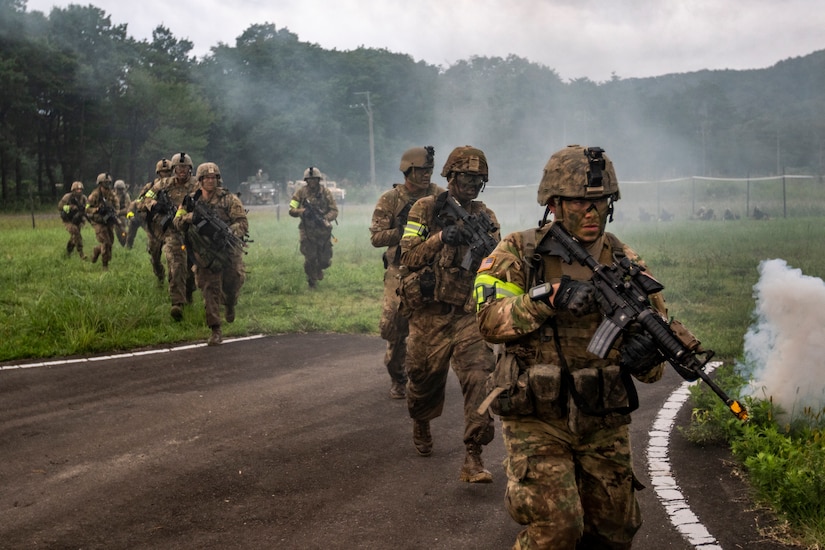By Jim Garamone, Defense Media Activity
WASHINGTON -- Four Indiana National Guard soldiers talked
with reporters at the Pentagon today about the experiences they had training
alongside Australian, Japanese and Indonesian service members as part of the
Defense Department’s “Showcasing lethality” series.
The soldiers – from the 76th Infantry Brigade Combat Team –
were the first from the Guard to lead one of the annual U.S. Indo-Pacific
Command series of Pacific Pathways exercises, said Army Command Sgt. Maj. James
R. Gordon, the state command sergeant major.
The exercise is a way to build expeditionary readiness while
at the same time reinforcing the U.S. Army’s commitment to its allies and
partners in the Pacific region, the sergeant major said.
A battalion from the brigade went to each of the countries.
Army Sgt. Samuel Gawaluck, a squad leader with the 2nd Battalion, 151st
Infantry, said his unit trained right alongside a Japanese unit.
“For the first part of the training, it was about chemical
warfare, urban operations and platoon attacks,” the Lafayette, Indiana, police
officer said. “We also conducted a bilateral field training exercise for three
days that culminated with both militaries assaulting an urban area.”
The American and Japanese soldiers would observe each other
as they pressed an attac, or cleared a building, giving soldiers from both
countries and opportunity to learn, he said.
Army Sgt. 1st Class Daryl Bollhoeffer is a platoon sergeant
with A Company, 1 st Battalion, 293rd Infantry. His unit went to Australia and
worked alongside both the Australian Defense Force and U.S. Marines. His platoon
would move in and relieve the Marines to go on another mission, then the
Marines would move in and relieve his unit, he said.
The training site was a massive area on the eastern side of
the continent. “It was winter for Australia, but it was not the winter we have
in Indiana,” Bollhoeffer said. “Watching the Australians fight and working
alongside them throughout the mission set was pretty educational. They are very
good at what they do, they are very disciplined. They were curious as to how we
conduct exercises.”
Mechanized Forces
The Australians brought mechanized forces into the exercise,
Bollhoeffer said. “We had to integrate that mindset into how we train,” he
said. “It’s awful nice to have tanks over your right shoulder when you are
moving across an objective.”
Bollhoeffer said that nothing in the exercise was “canned.”
There was no set recipe for the way things would turn out, he explained, and
that made it invaluable for the Indiana Guardsmen.
The whole exercise was an eye-opener for Army Sgt. David
Kent, a section leader with Headquarters Company of the 76th Brigade, who said
it increased the Indiana Guardsmen’s appreciation for U.S. partners and allies.
While he was in Australia, he noted, the exercise coincided with the 100th
anniversary of the Battle of Hamel, where Australian and U.S. soldiers fought
together on the Western Front in World War I.
“Gawaluck reflected on his experience working with Japanese
soldiers.
“Not many guys get a chance to train with the Japanese
Self-Defense Force,” he said. “It was very cool, very realistic. It was a lot
different than training in Indiana, where it is flat. We were hiking up
mountains with our rucks on. It was pretty amazing in our break time to talk
with the Japanese and realize they are guys just like us. They are there to
protect their homeland, and we are with them to train to protect our homeland.”







